Italian White Beans are slowly cooked with sage & garlic, resulting in plump, firm beans that are delicious dressed with olive oil or served on crostini.
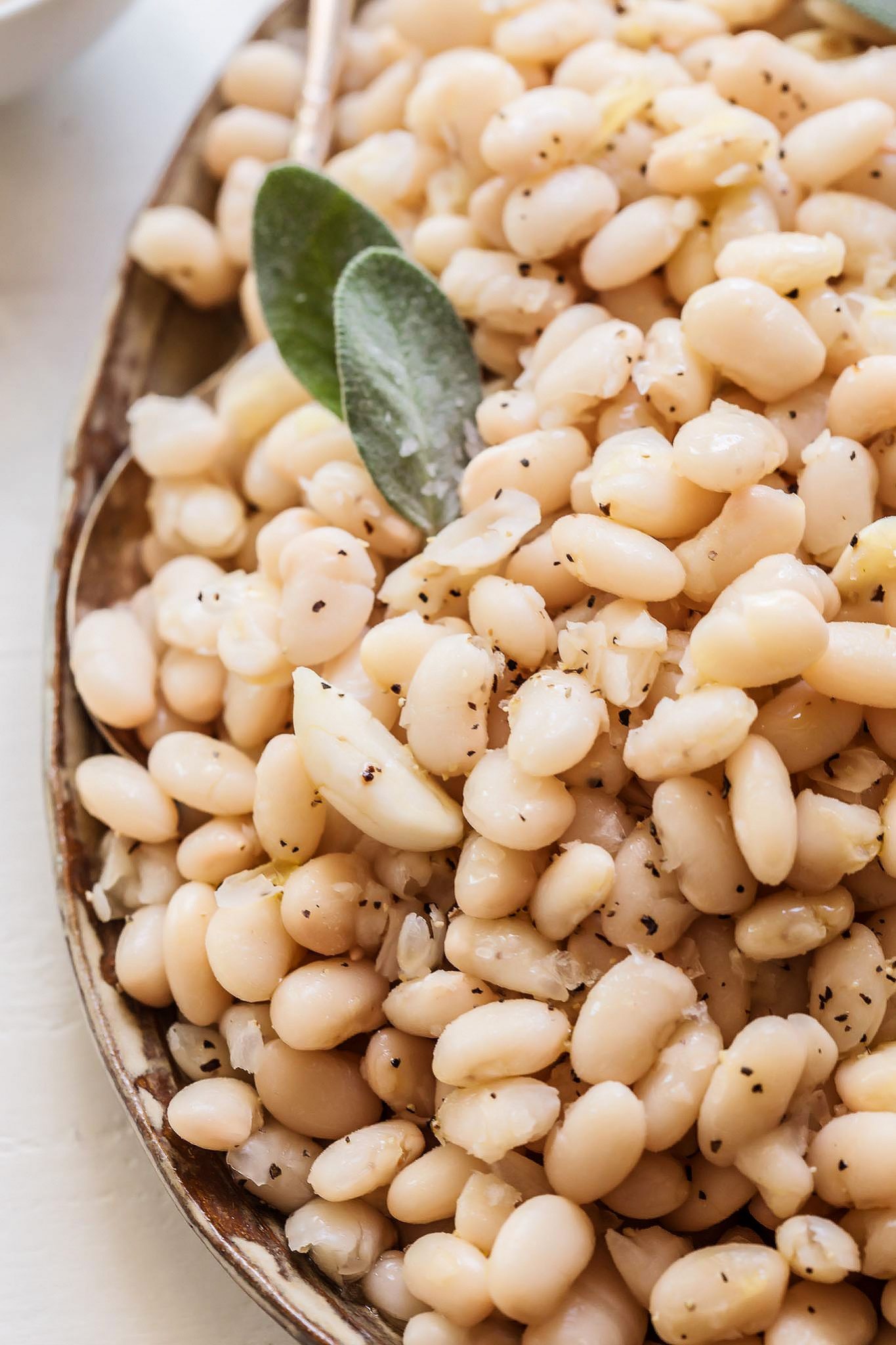
I came back from our trip to Italy this past summer with a desire to make some really authentic Italian dishes. Italian dishes that aren’t just your basic pasta with tomato sauce. There are also the more rustic dishes – things that we ate at those Italian restaurants that were only discovered after walking down several quiet alleyways, or served at the small wine bars sprinkled about the towns.
One of our favorite meals that we had when we were in Italy was at this restaurant perched on a hilltop overlooking the vines in Tuscany. We were taken here as part of a wine tour and told that George Clooney had eaten here not just once, but several times. After our first dish, I could tell why…
We had the most amazing meal that consisted of two specialty pastas – A ravioli dish with fresh shaved truffles and a rigatoni with wild boar ragu. Also served were crostini – served three ways. One with tomatoes and garlic, another topped with pate, and a third that was topped with traditional Italian white beans and a sprinkling of rosemary.
It was that meal, and that last crostini in particular, that inspired this dish.
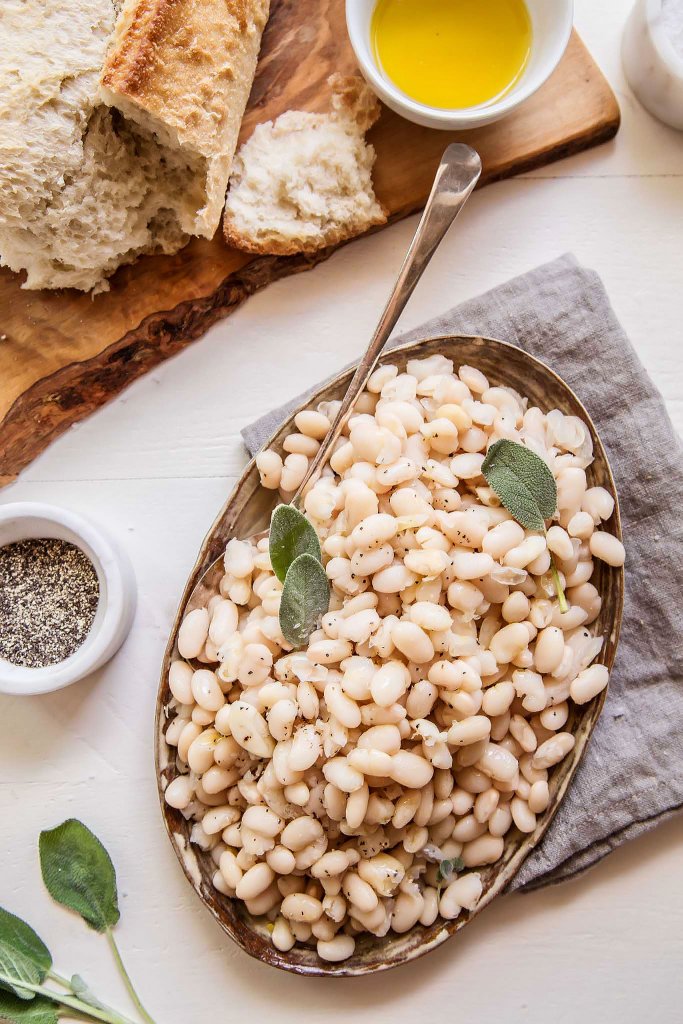
These Italian White Beans are cooked in the traditional style, low and slow on your stove. It’s that low and slow process that results in these beans holding their shape, not becoming too mushy, and having that perfect toothsome texture. They’re cooked simply, with just a few cloves of garlic, some fresh sage, and bay leaf. Because the flavor is simple, it’s up to you to decide what you’d like to do with them:
- Dress them with a bit of quality olive oil and a sprinkling of flaky sea salt.
- Serve them on crostini with a bit of fresh rosemary.
- Use them in soups and stews.
I found that this recipe made so many beans, that I was actually able to use them in several ways. I also froze some in mason jars to use for soups during the winter. Just package them up with their cooking broth and you can store them for up to 3 months. Be sure to leave about an inch of room in the jar though to account for expansion when the liquid freezes.
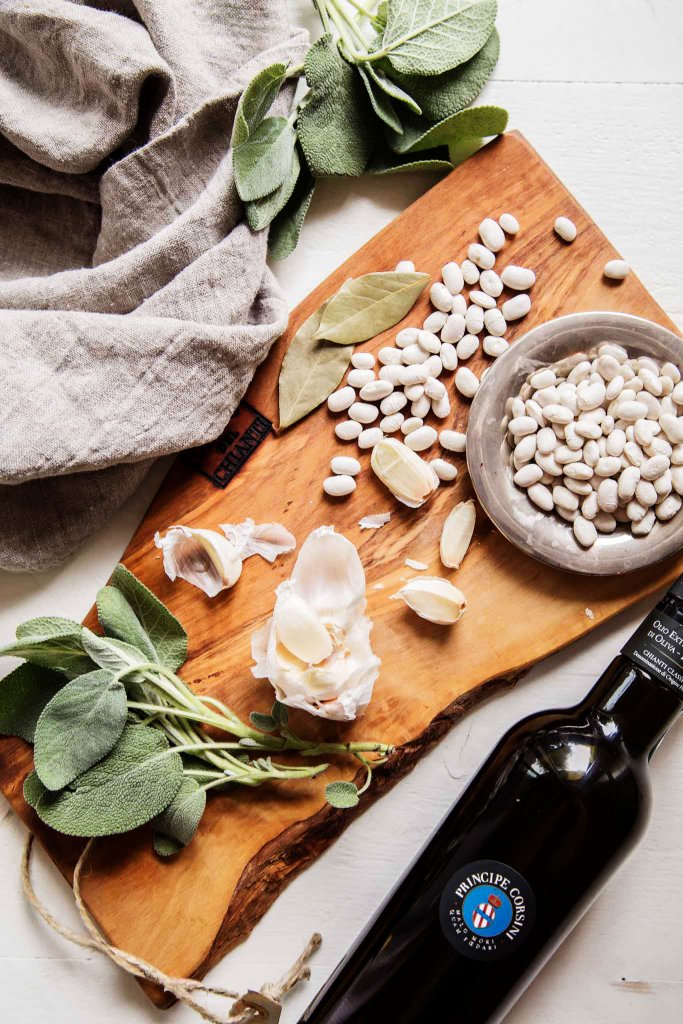
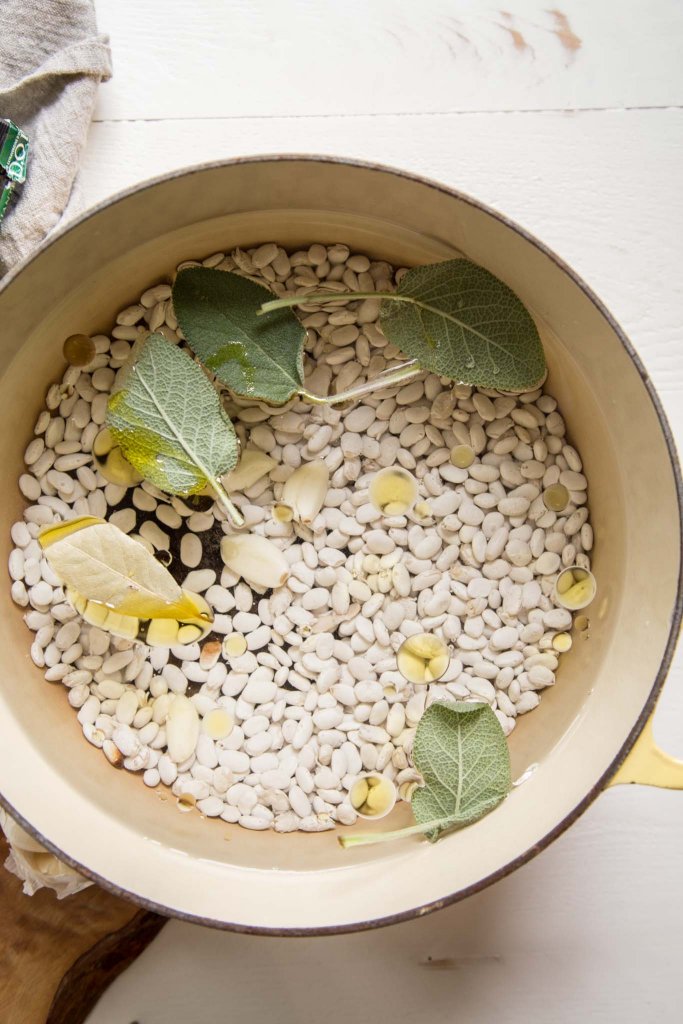
Did you know that white beans are part of a superfoods category called “pulses,” the dry, edible seeds of plants in the legume family, which also includes chickpeas, dry peas and lentils? They’re naturally high in protein and fiber, but low in fat, and I’ve definitely noticed that after eating a meal containing pulses, I stay full for quite a while afterwards. That’s why I love sneaking them into my diet as part of my lunch routine. For lunches, I’ll typically toss some of the beans with some pesto or mojo sauce. It’s a yummy lunch that can be enjoyed warm or cold.
If you’re looking for ways to eat healthier, sneaking pulses into your daily routine is definitely a great way to do it! Sign up for the Half-Cup Habit, and see how easy it can be to add ½ cup serving of pulses to your diet 3x per week. That’s totally doable, right?!
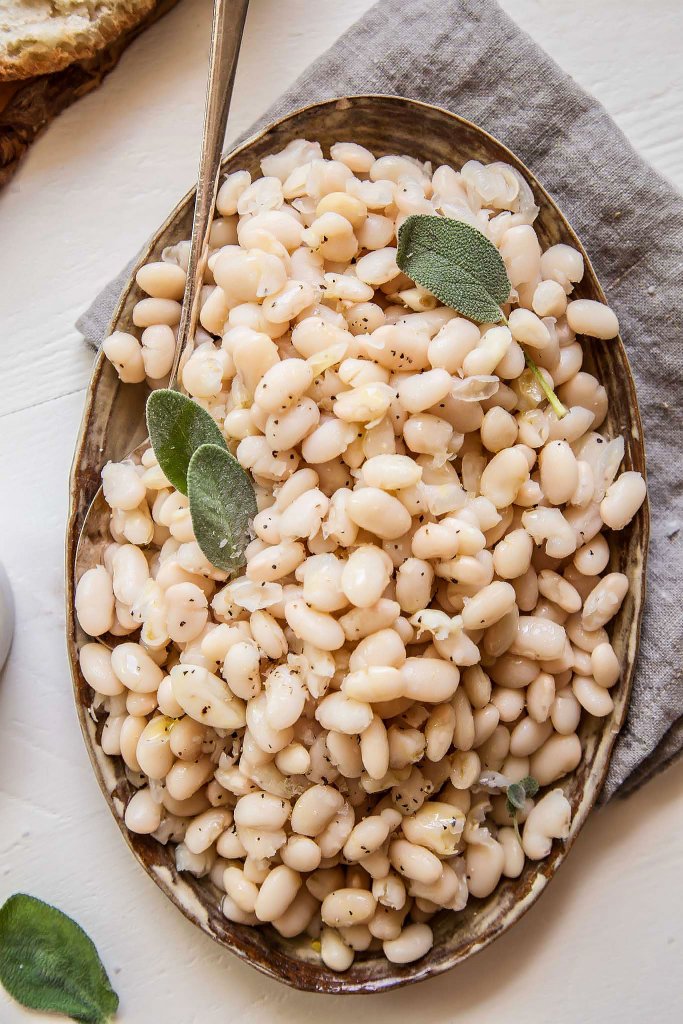
How would you serve these Italian white beans? On crostini? In a soup? As a salad? Let me know in the comments below.
Wine Pairings for Italian White Beans:
- Try pairing these creamy beans with a zesty white wine, like Pinot Gris or Verdicchio.
More Italian recipes
- Sunday Gravy (My Nana’s Meat Sauce)
- White Bolognese Sauce
- Chicken Piccata
- Broccoli Pesto
- Kale Pesto
- More → 85+ Italian Foods
More bean recipes
- Baked Beans
- How to Cook Canned Black Beans
- Instant Pot Refried Beans
- Mexican Black Beans Recipe (Frijoles Negros)
- Slow Cooker Black Beans
- Instant Pot Pinto Beans
- Instant Pot Black Beans
More → 20+ Recipes that use Cannellini Beans
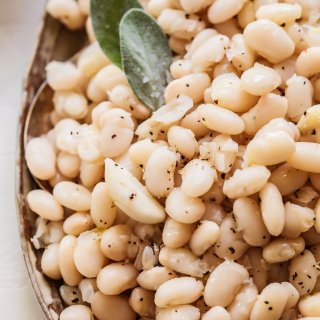
Italian White Beans
Ingredients
- 1 pound dried white beans (such as Great Northern, Cannelini or Navy (about 2 ½ cups))
- 12 cups water
- 4 cloves garlic (peeled and crushed)
- 5 fresh sage leaves
- 1 bay leaf
- Kosher salt and pepper (to taste)
- 4 Tablespoons extra virgin olive oil (high quality)
Instructions
- Rinse beans then place in large pot and cover with cold water. Set aside to soak for at least 4 hours or overnight.
- Place beans, water, garlic, sage, bay leaf and 2 Tbsp. oil in a heavy saucepan. Cover and slowly bring to a simmer over medium-low heat, about 1 hour. Gently simmer, stirring occasionally, until beans are tender but not mushy, about 1-2 hours more.
- Remove from heat, set aside, and allow beans to cool in the cooking liquid for 15 minutes. Season well with salt and pepper.
- To serve, drain the beans and drizzle with remaining 2 Tbsp. olive oil. You can also serve the beans on crostini as an appetizer.

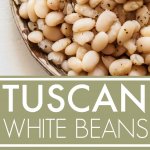

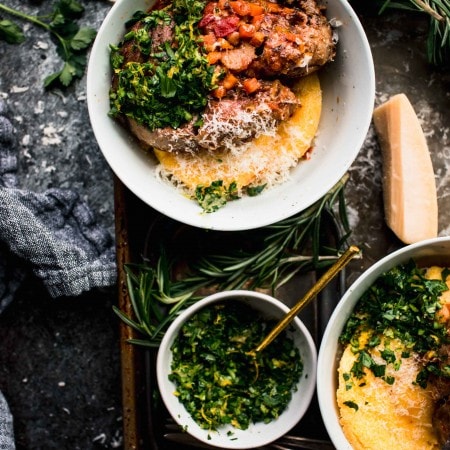

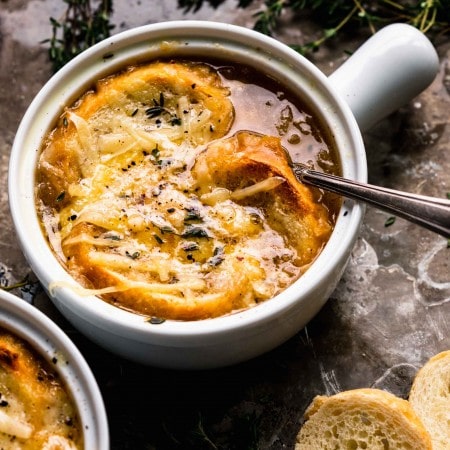
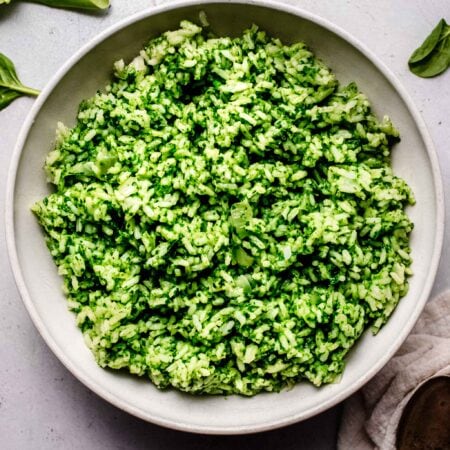
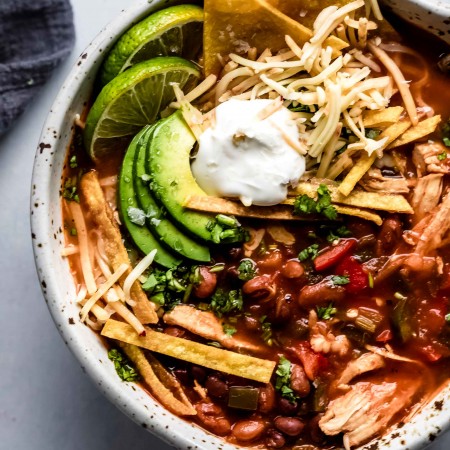
This sounds delicious and perfect for these cold, crisp fall days. I just need to talk my husband into liking beans:)
This sounds so easy to make but with a big payoff!
Oh my gosh, I am drooling at your description of the meal you enjoyed in Italy! Every meal I have ever eaten in Italy has been amazing. These Italian white beans look scrumptious! What a great side dish to bring to holiday parties too!
These would be really good with stew. The rainy days are making me crave more soups and stews and other comfort meals.
These remind me of the beans we had as a side with our gigantic Bistecca al Fiorentina when we were in Florence celebrating my birthday a few years ago. They were so simple, yet sooo good. I’ve been wanting to recreate them ever since! The steak is a different story. I don’t think that could ever be recreated.
I never got to try the steak when we were in Italy and I’m really bummed to have missed it! I guess that’s only one more excuse to go back!
I love beans! These look super good!
You omitted the important soaking step. Dried beans need to soak several hours before cooking. Otherwise, looks great.
Did make this recipe (including the over night soak) and they beans were delicious! Just what I was looking for on a chilly winter afternoon. Thanks!
I’m glad you liked it!
Sounds delish. One question: Do you drain off the soaking water and add new before cooking?
Yes – I do add new water before cooking. Thanks!
This looks really delicious. I was diagnosed with low potassium so I need to start eating foods rich inK potassium. Do you think that instead of cooking in water, they could be cooked in, say, chicken broth?
I think that’s a great idea! It will add some great flavor too!
Hello I have made this before and loved them. This time they aren’t great and no idea what changed. I used can beans. Should I have not used as much water?
Hi Rachel – Yes, if you’re using canned beans, they’re already cooked. So, you don’t need to soak them, or add really any additional water. Instead, I would drain and rinse the beans. Then, add them to a pot with a splash of water and some sage. Simmer for about 10-15 minutes, then season with salt and pepper and drizzle with olive oil. Enjoy!